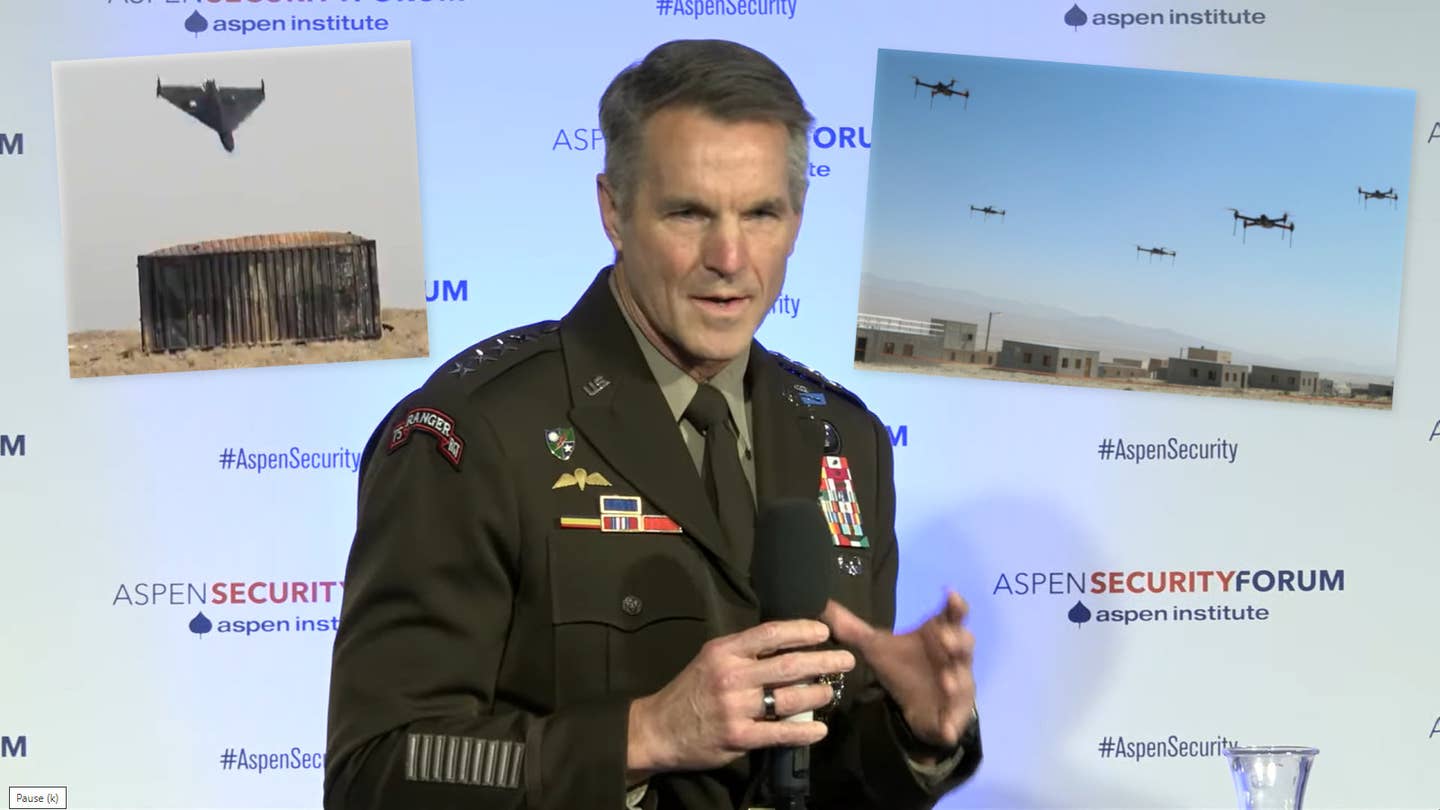Joe Kane
INTRODUCTION
As the world becomes more wireless, the radio frequencies that carry those wireless signals are becoming more crowded. And while, nowadays, all parties nod along with platitudes about how “there is no greenfield spectrum left,” they often harbor different ideas of what “spectrum sharing” really means. To some, it is the Holy Grail of intensive spectrum use that is now finally backed up by innovative technology that is ready for prime time. For others, it’s a false hope that instead engenders kludgy spectrum arrangements and systems that waste valuable bandwidth.
All agree, however, that the direction we take on spectrum sharing will determine the success or failure of a wireless economy that is only growing faster. This report provides a balanced view of optimistic and pessimistic assessments of spectrum sharing to help observers look realistically at the prospects for sharing and barriers to realizing its more aspirational promises.
THE TWO CAMPS
Opposition to expansive sharing comes from many quarters, buttressed by the beliefs of hard-line “property rights” conservatives and auto companies eager to protect their special set-asides.1 But among the most active participants are wireless companies that have built their businesses on exclusive licenses. To them, spectrum sharing is troubling: Why mess with the exclusive licensing framework that has become the backbone of the wireless marketplace today? It would be good to get some access to bands currently tied up by federal users, but even that might not be worth it, especially if federal agencies start to demand access to bands currently allocated exclusively to commercial use. Another worry is that if sharing becomes the norm in spectrum allocation, it could become an excuse to stop clearing bands for exclusive use, even as exclusively licensed bands are producing unprecedented value for the global economy.
So far, spectrum sharing seems like a Rorschach test: Each camp sees its view as obvious and the other’s as a dangerous or greedy ploy.
These worries have merit, especially since the rationale for the necessity of sharing is we are out of clearable spectrum, which is not a foregone conclusion. Just because a range of frequencies is used in a particular way today doesn’t mean it will always stay that way. Policymakers have already worked to move incumbents out of certain bands and then auction exclusive licenses—much to the benefit of users of wireless services, not to mention the U.S. Treasury.2 In the 600 MHz band, for example, TV broadcasters, aided by the transition to more efficient digital transmissions, have moved out of their existing channels to make room for mobile services.3 More recently, satellite companies did the same in the C band, taking advantage of advances in compression technology to squeeze the same services into a smaller swath of frequencies.4 Mobile companies would prefer that these kinds of transactions be the goal: Move or compress (or eliminate) existing uses of spectrum to open space for more productive uses. Under this view, sharing frameworks should be viewed as a last resort for bands that are genuinely unable to be cleared.
Moreover, opponents of spectrum sharing may fear that “sharing” is really just a way for potentially interfering users to muscle in and then claim rights to the detriment of incumbents who shelled out billions for exclusivity.5 They are reasonably wary of putting that investment at the mercy of sharing technologies without long track records of successfully preserving the certainty the incumbents paid for.
Proponents of sharing tend to be companies that don’t already hold spectrum licenses or groups that are generally skeptical of spectrum property rights.6 These often include edge companies whose users rely on unlicensed spectrum (e.g., for Wi-Fi). From their point of view, incumbents have nothing to complain about, since the premise of most dynamic spectrum sharing regimes is for primary users, such as incumbent mobile carriers, to be permitted to keep their existing rights.7 All sharing does, from their viewpoint, is allow others to use a band when and where the incumbent isn’t using it. This would result in more intensive use of spectrum, which is not only desirable but necessary as the airwaves become crowded. Sharing proponents point to dynamic sharing regimes such as the Citizens Broadband Radio Service (CBRS) in the 3.5 GHz band as a success story. 8 Indeed, large telecommunications providers are relying on CBRS for commercial networks.9 Therefore, sharing proponents view something like the CBRS model as ripe for application in other bands as a way to get commercial wireless capacity without having to wrestle it out of the hands of incumbents, especially politically troublesome government agencies.
RECENT PERSPECTIVES ON SHARING
So far, then, spectrum sharing seems like a Rorschach test: Each camp sees its view as obvious and the other’s as a dangerous or greedy ploy. Some recent writings on spectrum sharing can help add light to this disagreement and point the way to productive dialogue.
Sharing Optimists
First, a recent paper by John Leibovitz and Ruth Milkman provides a helpful taxonomy of sharing regimes by examining different sharing technologies alongside both centralized and decentralized methods of implementing them.10
A helpful feature of their analysis is their reframing of normal terminology that opposes “sharing” and “exclusivity.”11 This dichotomy is often false, since many sharing regimes reserve some users’ right to exclude harmful interference by others. “Exclusivity” is a relative term; exclusive rights mean the right to exclude someone else’s interfering activities. For example, in the CBRS band, holders of Priority Access Licenses (PALs) have the right to exclude General Authorized Access (GAA) when PAL users wish to transmit.12 Meanwhile, the Navy has the right to exclude both PAL and GAA users when it wishes to use its radar systems.
From this perspective, it is logically and legally sensible to implement a sharing regime in which incumbent licensees’ exclusivity rights are preserved. Admittedly, this does mean that a licensee might not always have the right to exclude the whole world, but it is not obvious that exclusivity as to any other use by anyone else in the world is always the most productive arrangement of rights. Spectrum is not really a thing that exists to be fenced off like a piece of land.13 The most efficient way to allocate the right to transmit electromagnetic radiation at a particular frequency, place, and time may not be to build the highest and strongest possible fence.
While property rights have clear benefits, they are not a goal in themselves. They are a tool to solve problems, such as the tragedy of the commons.14 But if the resource we are allocating is more productive without absolute rights, then we should not insist on more “property rights” for their own sake. Property rights should be employed insofar as they have net benefits over an alternative arrangement.
This is not to say that incumbents have no interest in the right to exclude uses that do not interfere now but. But protecting possible future deployments is not the same as per se exclusion of all others from the band for its own sake. Prospective exclusion (i.e., that which bars any opportunistic use even when it does not interfere with the incumbent) is one way to protect future interests, but if technological methods were able to oust opportunistic users reliably when the holder of exclusive rights sought to make further deployments, that would also protect the incumbent’s interest and would allow for more intensive spectrum use in the meantime. That would be an instance in which a “property” style arrangement is less efficient than sharing. In short, exclusivity need not be defined in terms of a walled-off range of frequencies. Exclusivity is a relationship between users, and it can be created by technology, policy, or both.
The most efficient way to allocate the right to transmit electromagnetic radiation at a particular frequency, place, and time may not be to build the highest and strongest possible fence.
Another helpful framing device in Leibovitz and Milkman’s paper is their discussion of sharing in terms of frequency reuse, but they may overemphasize its implementation via regulation at the expense of its widespread application under exclusive licenses.15 They do not discuss how cellular networks, for example, already facilitate widespread and efficient frequency reuse (sharing) today, explaining that they want to talk about sharing “across these different kinds of spectrum authorization regimes.”16 But while that is understandable as a way of differentiating types of sharing policies within the taxonomy of a whitepaper, it would risk assuming the conclusions of sharing advocates if used as an exclusive guide to policy: We only need to share between different government-imposed authorization regimes if we assume multiple such regimes exist within one band, as opposed to unified applications under a common authorization regime such that sharing can be managed by an exclusive licensee.
For example, perhaps the Department of Defense (DOD) is using a bespoke communications application that would interfere with mobile 5G service if it were added to a particular band. But if that application could be made to run on a 5G network, the uses could be harmonized without the need for a regulatorily imposed sharing regime and the costs (both in money and spectral efficiency) that entails. Indeed, right now, people throughout the country use their mobile carriers’ frequencies for diverse functions—such as watching HD video or making phone calls—without any third-party database or environmental sensing needed to reconcile the different applications.17
Sharing Pessimists
On the other end of the scale are sharing pessimists. Wireless technology analyst Peter Rysavy, for one, has been skeptical of the viability of current sharing regimes as normally understood.18 He emphasizes that, in practice, sharing regimes often come with a host of restrictions that reduce the productivity of the shared band and increase the complexity of using it. In the CBRS band, for example, the sharing arrangement necessitates power limits 327 times lower than those in the exclusively licensed C band.19 Rysavy’s concern is that spectrum sharing ends up being a “series of compromises” that are kludgy even for the band that they are designed to operate in.20 Such frameworks are even less generalizable throughout many bands, as proponents of spectrum sharing sometimes imply.
Still, Rysavy’s practical criticism of sharing is not that it cannot work but that it does not work yet. His critique is compatible with a view that new technologies could create a more workable and generalizable solution that will make the existing Environmental Sensing Capability (ESC), the detection system which itself uses valuable bandwidth and needs interference protection, look primitive. Rysavy is again skeptical, since one promising development on this front—the National Telecommunications and Information Administration’s (NTIA’s) Incumbent Informing Capability—is a long-term project with inadequate funding.21 Here, however, a counsel of despair is unwarranted: If viable sharing technologies are on the horizon but underfunded, policymakers can do something about that. In sum, it may be that potentially viable future sharing technologies are possible but aren’t yet ready for wide deployment.
WHO’S RIGHT?
Sharing optimists also have compelling points to make about how clever technological sharing regimes could dramatically increase the overall capacity of radio frequency and lead to a future of spectrum abundance. That is a goal worth pursuing. But the technological allure of sharing regimes should not be taken for an imperative to implement them as soon as possible. There are good economic reasons to prefer a unified private controller of a band on which many types of services (government and commercial) can operate. No matter how good a regulatory sharing policy is, it is likely to be less efficient than not sharing because sharing regimes are not costless to operate. Fundamentally, spectrum sharing technologies are trying to solve a problem of externalities: Different potential users of a given frequency in the same time and place will lead to rampant harmful interference such that, like cows overgrazing a commonly held field, the value of the spectrum is diminished. Private control of the band internalizes that externality: A mobile carrier, for example, has the incentive to maximize the capacity of its network and, therefore, must use its rights as efficiently as possible and not allow too much interference.
Acknowledging these trade-offs and emphasizing the need for significant technological advances before sharing is universally preferable is a more practical approach than lionizing today’s sharing regimes as the prepared-to-go model for the future.
While the government can attempt to design and operate a sharing regime that is in the interest of the public at large, it cannot internalize the externalities of harmful interference. This means potential users cannot fully trust each other absent technological protocols and enforcement mechanisms—which themselves require monetary outlays and access to radio frequencies that will always impose additional costs above similar mechanisms in an exclusively licensed band in which the licensee has aligned incentives.
To be sure, converting all potential uses to be compatible with a private network operator, including necessary reliability and security requirements, will often be a technical challenge in and of itself. Private licensing of every band is not a panacea, but policymakers should not allow bureaucratic inertia to force their hands into relying on inefficient or unreliable sharing technologies as the only alternative.
Overall, therefore, sharing pessimists also have a valid point that sharing is not a free lunch. Given current technology, we cannot get all the benefits of exclusive licenses, either in terms of quality of service or long-term investment by the wireless industry, without the purportedly intractable challenge of clearing incumbents out of a band. Acknowledging these trade-offs and emphasizing the need for significant technological advances before sharing is universally preferable is a more practical approach than lionizing today’s sharing regimes as the prepared-to-go model for the future.
WHAT SHOULD BE DONE?
The current spectrum sharing landscape is one of promising ideas and technologies that require further investment to be generalizable solutions. It would be a mistake to take, for example, the CBRS sharing framework as it currently exists and impose it as a model for application in every band from now on. But while the technological barriers to maximally efficient spectrum use and sharing remain, overcoming those barriers is a worthwhile and necessary endeavor. Therefore, the federal government and private sector should focus their money and talents on technological progress in the following four areas.
First, we should reject the spectrum nihilism that says we’re out of spectrum that is or could be cleared. Advances in compression technologies have enabled the clearing of bands that have now become valuable tentpoles of the wireless marketplace. Both private and government spectrum users should therefore invest in compression technologies. This can be incentivized by making clear that licensees that manage to clear a currently encumbered band would be able to reap the profits of selling or using its capacity. Research of compression technologies should also be the subject of direct appropriations, such as those now allocated to research arms of NTIA. While recent efforts to fund additional research in this area have focused on sharing systems themselves, technologies that could forestall the need for sharing are just as important—and often preferable.
The current spectrum sharing landscape is one of promising ideas and technologies that require further investment to be generalizable solutions.
Second, industry and government should take inventory of current applications that are using bespoke systems, especially in federally controlled bands, in order to develop ways to make them run on commercial networks. Commercial mobile operators have both the ability and incentive to build services secure enough for critical federal missions, and the government could then benefit from private sector investments in infrastructure and technological development rather than having to build an ad hoc system for a particular agency. Government agencies routinely buy everything from pencils to buildings from the private sector. Adding wireless services to the list should be considered a primary solution, preferable to rigging up an ad hoc system that has difficulty coexisting with commercial neighbors.
For example, the current efforts to evaluate DOD uses of the lower 3 GHz band should not simply find ways to squeeze in 5G networks around current DOD services. The department should also try to migrate services onto those 5G networks that can provide the same reliability and security while internalizing interference externalities that would otherwise cause clashing protocols to diminish the overall capacity and efficiency of the band.
Third, research and development of more direct sharing technologies for bands where clearing is genuinely impossible should be expanded. These efforts must, however, continue to raise the bar for the reliability and real-time nature of their systems. The wireless industry has thrived due to immense private investments, which in turn depend on the certainty that the spectrum capacity a company buys will be available whenever it is needed, free from harmful interference. Ensuring that sharing technologies provide a similar level of certainty is a key requirement for the long-run viability of spectrum sharing. NTIA’s proposed Incumbent Informing Capability (ICC) is promising in this regard.22 The pending State Measurement for Accountable, Responsive, and Transparent Government (SMART) Act would provide a substantial boost to this process, and Congress should ensure the ICC gets the funding it needs to reach maturity.23 Also, the National Science Foundation’s Spectrum and Wireless Innovation enabled by Future Technologies (SWIFT) program is soliciting “new concepts and ideas” for “effective spectrum utilization and/or coexistence.”24 Funding for these types of efforts, as well as continued investment from the private sector, will help lay the technological groundwork for the sharing-first future that sharing optimists envision.
Finally, there should be greater transparency and usability in databases of current spectrum allocations, as more researchers and inventors would be able to contribute their talents to solving spectrum problems if the current state of the wireless ecosystem were more knowable. An updated Universal Licensing System, to replace the Federal Communications Commission’s current user-unfriendly version, would be useful here.25 In parallel, an actively updated inventory of federal spectrum would provide policymakers and the public greater transparency into where opportunities for sharing exist.
Spectrum policymakers would be choosing poorly if they invest too much hope in today’s spectrum-sharing technologies. But our wishes for more intensive and efficient spectrum use through technological advancement need not become kludgy or wasteful if the private and public sectors invest vigorously in its development.














